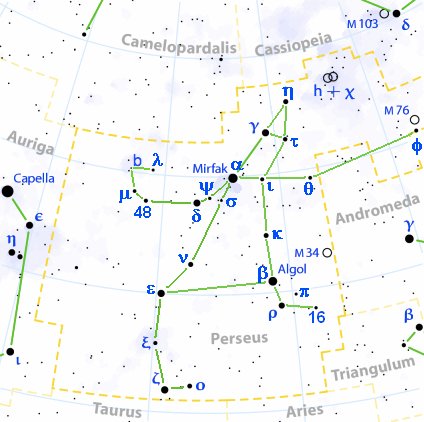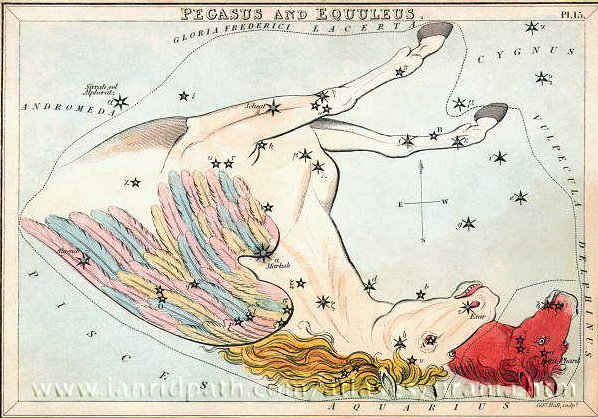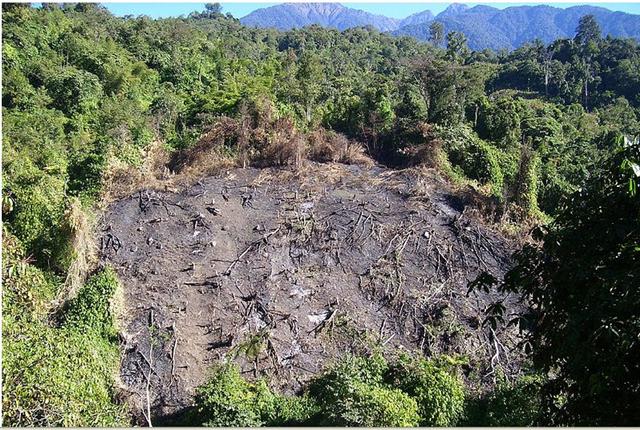R (Small
Washington Tablet)
37. → 1037 = 17 * 61
... There is much to consider and; by the way, the 1000 + 1
nights upheld by Scheherazade should
induce us to look for glyph number 1001 on the A tablet. And
with 1333 at Aa8-84 this place ought to be 332 nights (glyphs)
earlier ...
The number of glyphs on the Tahua (A) tablet is 1334. From our
newly aquired insight of how Schedir was located 60 days after
January 29, we can guess these 60 days might have represented a
kind of dark interregnum period before day zero in spring.
1334 + 60 = 1394 → January 29
(Ca11-30) + 1000.

The Chinese structure has Sadalmelik (the Lucky King) at
February 18 instead of the White Spot (Al Kurhah) at the throat of
King Cepheus. The Greek royal family (Cepheus,
Cassiopeia, Andromeda) was presumably a later creation than
the Great One (Aquarius).
... Furud is either from Al Furud,
the Bright Single One [which ought to refer to Canopus I
believe], or, perhaps by a transcriber's error, from Al Kurūd,
the Apes, referring to the surrounding small stars with some
of those of Columba; Ideler thought the latter derivation more
probable. Al Sufi mentioned these as Al Agribah, the
Ravens. ζ marks the toe of the right
hind foot ...
"Kazwini called this [ξ Cephei] Al Kurbah, an Arabic word that
Ideler translted as a
white spot, or blaze, in the face of a horse; but thinking
this not a proper stellar name, suggested Al Kirdah, the
Ape. He seems here, however, to have forgotten Al Hikah of
Orion, of the same meaning as that to which he objected."
(Allen)
I
think it would be suitable to have a clever tree climber like an
ape at the apex.

And then came the Dancing Outdoor Man in order to save the situation,
viz. Perseus:

... The old man's daughter heard him singing,
and said to her father: 'O, let the stranger come into the
house; he sings and dances so beautifully.'
...
... The Perseus constellation is beginning with
Φ Andromedae,
i.e. at FEBRUARY 1 ...
 |
|
ε Equulei (*317.8) |
| Te moko |

 |
*11 |
 |
*11 |
 |
*15 |
 |
*24 |
 |
|
Ca11-30 (314) |
Ca12-9 (325) |
Ca12-18 |
Ca13-7 (350) |
Ca14-11 (374 = 314 + 60) |
|
ALBALI (*314.8)
|
SADALSUD (*325.9) |
AL KURHAH
(White Spot, ξ Cephei) (*334.4)
|
MARKAB (*349.5) |
DELTA (*8.4) |
|
Jan 29 (394) |
Febr 9 (405) |
Febr 18 (414) "Jan 8 (373) |
March 5 (429) |
March 29 (88)
"Febr 16 (47) |
|
Girl-10 (Bat) |
Emptiness-11 (Rat) |
Rooftop-12 (Swallow) |
House-13 (Pig) |
SCHEDIR (Breast) |
|
te hokohuki - kua haga te mata o te
moko |
oho te vae |
oho te vae |
manu rere |
te heke |
|
Heke, hakaheke, to pull
down, to overthrow. Mgv.: akaeke, to overthrow,
to vanquish; heke, to fall down, to fall to
pieces: akaheke; akahekeheke, to demolish.
Mq.: heke, to crumble, to fall down; hakaheke,
to demolish, to pull down. Churchill. Kai heke,
hakaheke, to deflower.
Kahukahu o heke, an octopus hiding in his ink.
Mq.: ve'eve'e
'tentacules du heke'. Barthel 2. Pau.: Heke,
to purge. Mgv.: heke-toto, hemorrhage. Ta.:
hee, to purge. Mq.: heke, to drip. Ma.:
heke, id. Pau.: Hekeheke, elephantiasis. Ta.:
feefee, id. Mq.: fefe, id. Sa.:
fe'efe'e, id. Mgv.: Heke, eke,
octopus. Ta.: fee, id. Mq.: heke, feke,
fee, id. Sa.: fe'e, id. Ma.: wheke,
id. Ta.: Hee, to slide, to swim. Sa.: se'e,
to slide, to shoot the breakers. Ha.: hee, id.
Mq.: Hee oto, to cut. Sa.: sele, id. Ha.:
helehele, id. Churchill. Ma.: 1. Migrate. Islands
of History. 2. Rafter. Starzecka.Heke,
hakaheke, to pull down, to overthrow. Mgv.:
akaeke, to overthrow, to vanquish; heke, to
fall down, to fall to pieces: akaheke;
akahekeheke, to demolish. Mq.: heke, to
crumble, to fall down; hakaheke, to demolish, to
pull down. Churchill. Kai heke, hakaheke,
to deflower.
Kahukahu o heke, an octopus hiding in his ink.
Mq.: ve'eve'e
'tentacules du heke'. Barthel 2. Pau.: Heke,
to purge. Mgv.: heke-toto, hemorrhage. Ta.:
hee, to purge. Mq.: heke, to drip. Ma.:
heke, id. Pau.: Hekeheke, elephantiasis. Ta.:
feefee, id. Mq.: fefe, id. Sa.:
fe'efe'e, id. Mgv.: Heke, eke,
octopus. Ta.: fee, id. Mq.: heke, feke,
fee, id. Sa.: fe'e, id. Ma.: wheke,
id. Ta.: Hee, to slide, to swim. Sa.: se'e,
to slide, to shoot the breakers. Ha.: hee, id.
Mq.: Hee oto, to cut. Sa.: sele, id. Ha.:
helehele, id. Churchill. Ma.: 1. Migrate. Islands
of History. 2. Rafter. Starzecka. |
... When the man,
Ulu, returned to his wife from his visit to the temple at
Puueo, he said, 'I have heard
the voice of the
noble Mo'o, and he has told me that tonight,
as soon as darkness draws over the sea and the fires of the
volcano goddess, Pele, light the clouds over the crater
of Mount Kilauea, the
black cloth will cover my head. And when the breath has gone
from my body and my spirit has departed to the realms of the
dead, you are to bury my head carefully near our spring of
running water. Plant my heart and entrails near the door of the
house. My feet, legs, and arms, hide in the same manner. Then
lie down upon the couch where the two of us have reposed so
often, listen carefully throughout the night, and do not go
forth before the sun has reddened the morning sky. If, in the
silence of the night, you should hear noises as of falling
leaves and flowers, and afterward as of heavy fruit dropping to
the ground, you will know that my prayer has been granted: the
life of our little boy will be saved.' And having said that,
Ulu fell on his face and died
...
 |
 |
 |
|
Ca11-30 (314) |
moko |
Ca12-1 (317) |

... A une certaine saison, on amassait des
vivres, on faisait fête On emmaillotait un corail, pierre de
défunt lezard, on l'enterrait, tanu. Cette cérémonie
était un point de départ pour beacoup d'affaires, notamment de
vacances pour le chant des tablettes ou de la priére,
tanu i te tau moko o tana pure,
enterrer la pierre sépulcrale de lézard de sa prière
...
1394 + 60 = 1454 → 454 → Ca14-12:

 |
 |
 |
 |
 |
|
Ca14-11 (314 + 60) |
Ca14-12 (375) |
Ca14-13 → 14 * 29½ |
Ca14-14 |
(378 → Saturn) |
|
DELTA (*8.4)
SCHEDIR (Breast) = α
Cassiopeiae |
DENEB KAITOS (*9.4) |
ACHIRD (Woman with Luminous
Rays) = η Cassiopeiae (*10.7) |
Legs-15 (Wolf)
η ANDROMEDAE
(*11.4) |
CIH (Whip)
= γ Cassiopeiae (*12.4)
*336.0 = *12.4 - *41.4
→
4 * 84 |
|
March 29 (88)
"Febr 16
(47) |
March
30 (454)
"Febr 17 (413) |
March 31 (90) |
April 1 (91) |
April 2 |
|
te heke |
te kihikihi |
o te henua - kua haga hia |
kua pua |
te vero |
|
Sept 28
(*191)
"Aug 18
(*150) |
29 (2 *
136) |
30 |
Oct 1 |
2 (275) |
|
PORRIMA |
MIMOSA |
*193 |
ALIOTH
|
MINELAUVA |
|
Pua. 1. A zingiberacea
(plant of which few specimens are left on the island).
2. Flower: pua ti, ti flower, pua taro, taro
flower, pua maúku pasture flower; pua nakonako,
a plant which grows on steep slopes and produce red,
edible berries. 3. Pua tariga (or perhaps pu'a
tariga), anciently, hoops put in earlobes. 4. The
nanue fish when young and tender. Puapua,
summit, top, upper part; te puapua o te maúga,
the top of the mountain; te puapua kupega, the
upper part of a fishing net. Vanaga. Pu'a. 1.
(Modern form of pu'o), to cover up something or
oneself, to put on; ka-pu'a te ha'u, put on your
hat; ka-pu'a-mai te nua, cover me up with a
blanket. 2. To respond to the song of the first group of
singers; to sing the antistrophe; he-pu'a te tai.
3. To help; ka-pu'a toou rima ki a Timo ite aga,
help Timothy with the work. 4. Pu'a-hare, to help
a relative in war or in any need; ka-oho,
ka-pu'a-hare korua, ko ga kope, go, give your
relative a hand, lads. 5. To speak out in someone's
favour; e pu'a-mai toou re'o kia au, speak in my
favour, intercede for me. Pu'apu'a, to hit, to
beat. Vanaga. 1. Flower, ginger, soap; pua mouku,
grass. 2. To grease, to coat with tar, to pitch; pua
ei meamea, to make yellow. Puapua, a piece of
cloth. Mgv.: pua, a flower, turmeric, starchy
matter of the turmeric and hence soap. Mq.: pua,
a flower, soap. Ta.: pua, id. Ma.: puapua,
cloth wrapped about the arm. Churchill |

|











